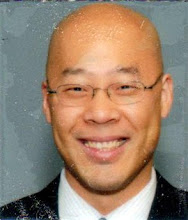This semester, the Stud's had a slightly different schedule. The Stud had five classes:
- Trial Advocacy wrapped up with a final trial before the test period, although it was the last of the many Trial Advocacy sections to finish up.
- Trademark Law was the first final, and was multiple choice. It was fairly easy, but there were significant ambiguities, such that all the students were talking about it.
- Law of Sales was rather difficult, even though the class was fairly engaging. Professor Hull is one of those that can make you feel like you understand during class, only to go back to your notes and scratch your head wondering what the heck happened. The test was multiple choice, and involved much international matters.
- Marital Property was the last and shortest of the Stud's three sit-down finals, and was also multiple choice. The test was more difficult than the sample questions would have let on.
- Law of War was a seminar paper class. This class kept the Stud busy until the evening of Thursday 20 December 2007.
For the entire week before the week of Christmas, the Stud was essentially working on the Law of War paper, with an eye toward finishing the paper by the time the After Finals Party, hosted by Beatbox and Baxter at Ritual. The Stud figured, if there was a possibility of getting nice and drunk at the party, there would not be enough time for both substantive writing and cite-checking the next day, when the paper was due.
By the week of the 17th, the flood of students had dissipated from the library. The first year students were having their Criminal Law final, and the third year students were having their Remedies final. Tuesday would be the Evidence final, which really got the second year students ready for the party. And Wednesday would be the California Civil Procedure final.
On the 17th, after the Stud said goodbye to Aloha Princess, he hunkered down at the library, and worked on that Law of War paper. There was some good work done. And before the Stud knew it, it was past midnight, and time to go home.

The Stud's schedule was thus spread out, so the stress was more of a long simmer than a relentless barrage. Except for one minor episode of freaking out over the Law of Sales final (which is hard to avoid when one realizes there were so many "gunners" in that class), the Stud sailed through this finals season at a relatively leisurely pace. Only one more semester to go.


